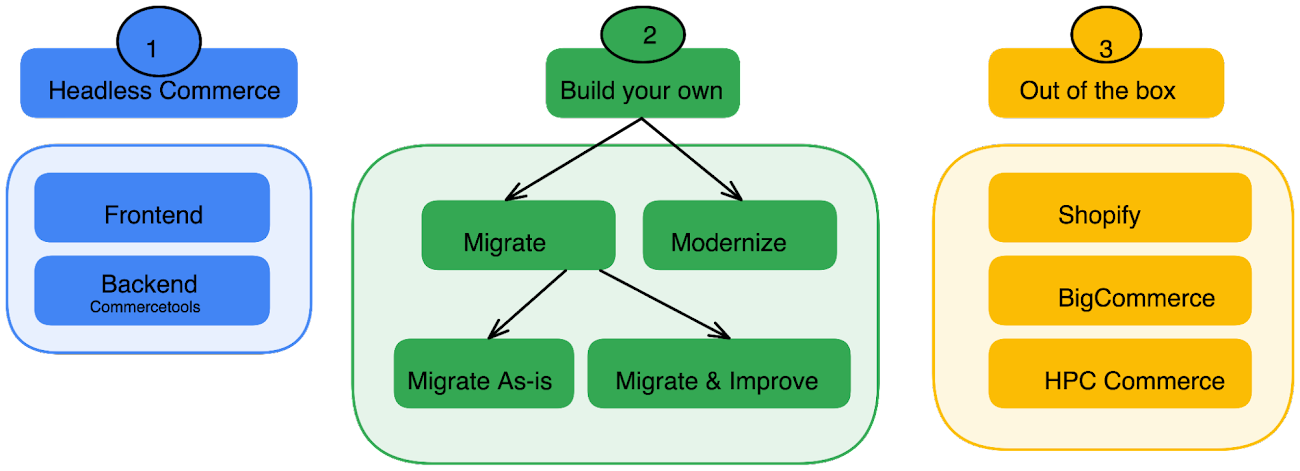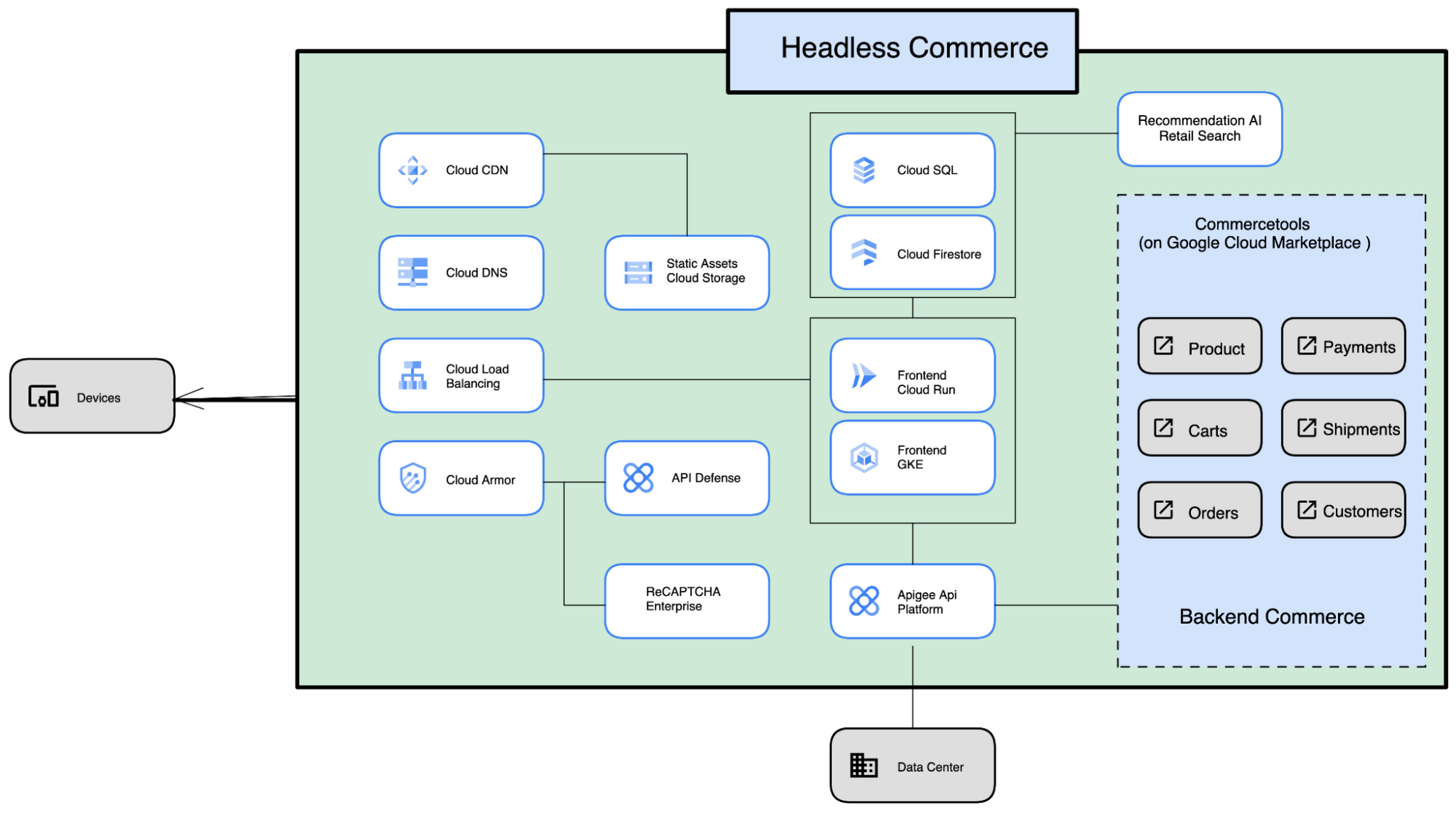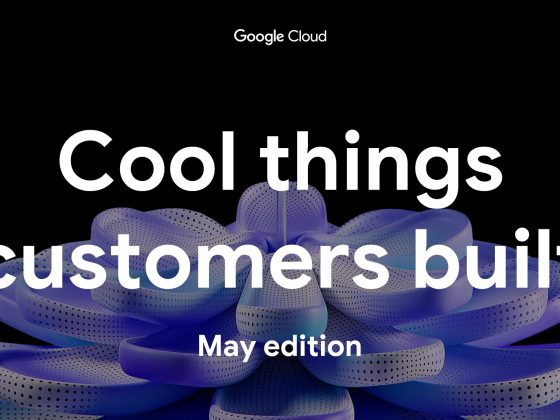Are you a retailer looking to create a next-gen digital commerce platform? If so, you have landed at the right place! This post describes three different ways to modernize your ecommerce platform on Google Cloud. No one way is right or wrong. You can start off on any path that works well for your team and current infrastructure, and then work your way towards a fully modernized platform. Before diving in, if you prefer to watch a 15-minute video check it out 👇
From our partners:
The three main approaches to modernizing your digital commerce platform are headless commerce, build your own, and out-of-the-box.
1. Headless commerce
As a retailer you might want to own and control the frontend for providing an engaging and differentiated shopping experience, and use ready-to-use backend commerce building blocks for capabilities such as product catalog and cart functionality, pricing, promotions, shipping, and account management.
When you decouple the backend from the frontend in a headless commerce approach it becomes easier for your teams to:
- Update the client-facing site (for example, to handle seasonal campaigns) without needing backend skills and without risking regressions in the backend processing.
- Harness shopper interaction data (i.e. first-party data) and then use that data to gain insights into shopping behavior and activate data-driven, personalized offerings to increase sales conversions.
- Make nimble updates to the frontend while maintaining compliance with security and other standards.
- Maintain consistent performance for the end-to-end client experience as you apply updates to the frontend.
Here is a sample architecture of a headless commerce implementation on Google Cloud using Commercetools, a Google ISV partner, as a backend and Cloud Run or Google Kubernetes Engine (GKE) as the frontend. For more on this sample architecture, see this short tutorial that walks you through the integration.
2. Build your own commerce platform on Google Cloud
With the build-your-own approach, you assemble your own solution using building blocks from Google Cloud, including AI / ML tools and data management tools. There are three main ways to implement this approach:
a. Migrate your existing solution as-is by hosting your existing solution in Google Cloud instead of running it in your own data center. This minimizes the changes required to get to the cloud, but you don’t get the benefits of a microservices architecture.
b. Migrate (and improve) your existing solution to a microservices architecture that uses containers and managed services in Google Cloud. This approach requires more changes than migrating your existing solution as-is. But once you’ve migrated, you’ll realize the benefits of a cloud-native, containerized architecture, including easier maintenance, improved flexibility, and scalability. Here is a sample architecture for migrating and improving your commerce platform using GKE.
c. Modernize the architecture completely. Let’s say you have migrated to Google Cloud using GKE or Compute Engine. Or maybe you are building an entire modernized commerce platform from scratch. How would you then progress to a modernized fully containerized microservices architecture? Well, you can check out the complete architecture in this video, but here is a summary.
Think about implementing the platform with smaller services separated into four layers:
- Presentation layer – Your single-page application (SPA) builder and content.
- Services Layer – Services such as session, search, account, inventory, orders, and so on.
- Storage layer – Your storage choices for the services. These can vary based on the type of service, for example: CloudSQL or Cloud Spanner for inventory and products, and Firestore for user sessions.
- Cache layer – Your transient cache, which can use Memorystore to access recently queried data without querying the storage layer again.
In addition to being the most flexible option, this architecture has many benefits, which include enabling your organization to:
- Independently develop and scale microservices to accommodate traffic spikes and lower TCO.
- Add/deploy new services at any time without affecting any other services.
- Have different teams working on different services in different languages.
- Establish a closed loop between the data platform and the commerce platform to better understand customer behavior and offer personalized experiences.
Use an off-the-shelf software-as-a-service (SaaS) solution on Google Cloud
The off-the-shelf approach uses an existing SaaS solution, such as Shopify or BigCommerce, that is hosted on Google Cloud. This approach works best if you don’t need much customization. You can take advantage of Google Cloud features and capabilities, including Analytics 360, to get insights about your customers and analyze the data generated by your solution.
What’s next?
Which of these approaches do you find most appealing? To help you make a decision we created some resources for you:
- 🎥Watch this video, which walks through these approaches along with their respective sample architectures
- 📖 Read the headless commerce documentation
- 👩💻 Try out a detailed headless commerce tutorial
- 🛠 Set up your own modern digital commerce platform from scratch
We would love to hear your feedback about these resources, so please share or start a conversation with @pvergadia on Twitter.
By: Priyanka Vergadia (Developer Advocate, Google), Logan Vadivelu (Global Retail Solutions Lead) and Mark Ryan (Technical Writer)
Source: Google Cloud Blog
For enquiries, product placements, sponsorships, and collaborations, connect with us at [email protected]. We'd love to hear from you!
Our humans need coffee too! Your support is highly appreciated, thank you!











